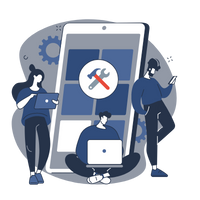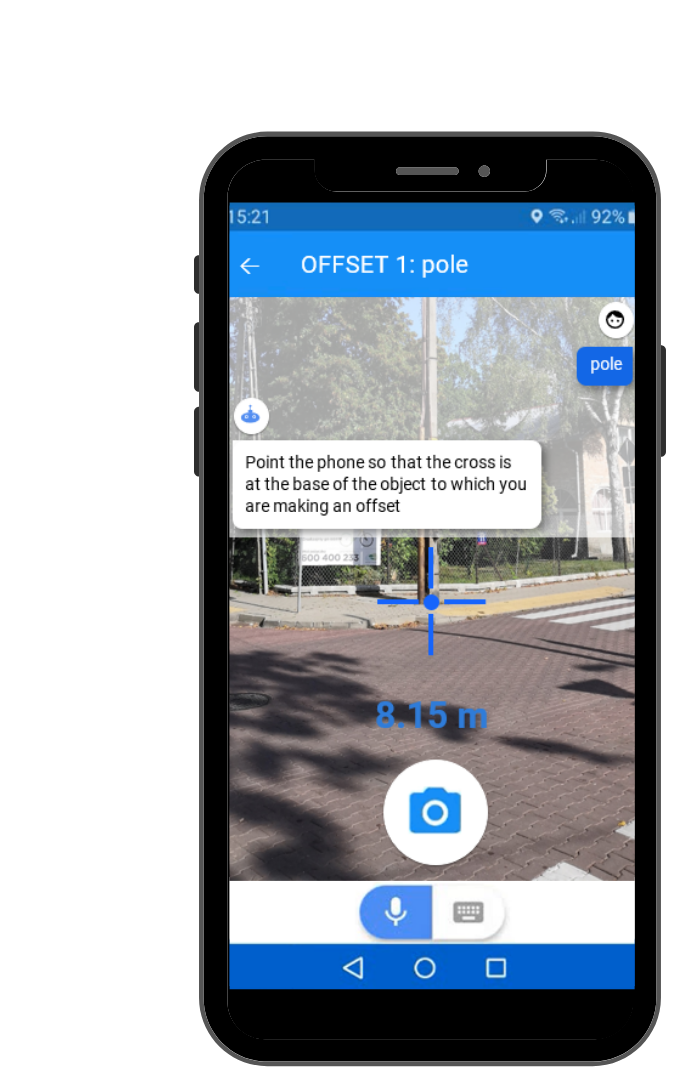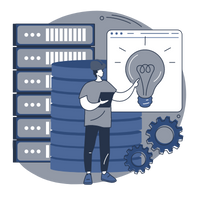
Almost every network operator faces the same challenge – how to take control over their massive amount of data and actually use it for business purposes? A big part of the data is gathered by field workers, so naturally, they are involved in the data collection process.
Aside from their day-to-day tasks in the field, technicians need to remember about gathering detailed information (about network topology, the technical condition of the nodes, and others) and reporting all the data. This process can be problematic, as it is time-consuming and often seen as unnecessary. How can you improve the data collection process so that it is effective and brings real benefits instead of frustrating the field crews?

Why is fieldwork data so important?
Up-to-date information about your network is crucial for making informed decisions. It’s not enough to just enter the information into the system once as it can get old or irrelevant. It’s therefore important to update it regularly so that the system that processes it remains reliable.
It’s a real challenge for network operators (telecommunications, energy, district heating, etc.). The network is constantly changing. If you don’t have an updated database about your resources, it can quickly affect the quality of your services. The data must be updated regularly, whenever a change occurs.

One way to update the data is to do it based on as-built documentation and many companies decide to go this way. If you have and follow a proper procedure for that, the database in your system will be updated but there’s a trap. There’s often a delay between the change in the field and the moment it appears in the system.
This is because you need some time to prepare and submit the documentation. Moreover, the documentation is often not prepared for minor changes or network switches. All of this can affect the data accuracy, and this is where the problems begin.
How does a technician operate in the field?
There are many apps that support fieldwork, but many companies still use the good old pen and paper. Technicians note down information while they are in the field and then re-write it after returning to the office, or somebody else enters the information into the system manually for them.
Companies are sometimes reluctant when it comes to specialized reporting tools. They see them as unnecessary or available only to big players on the market. But the thing is, an old school „notepad” method is inefficient, the updating process is time-consuming, and the data is often poor-quality. Using specialized tools, on the other hand, can significantly improve the reporting process and translates into real benefits for the company – even when you count the time spent on training the technicians how to utilize them.

How does a lack of the right reporting tools affect data quality?
When considering a reporting solution, the key factor is data quality. It determines whether the data can be considered useful or not. Hand-written information is usually low-quality.
What does this mean exactly?
- It’s not complete – it can be missing information that can turn your data into useful knowledge.
- It lacks internal consistency – different people/departments can use various names/different nomenclature.
- It lacks accuracy – the data is either not precise enough from the user’s standpoint, or does not match their level of expertise and expectations.
- It’s unavailable – data is not available on time because it takes time to enter it into the system.
- It lacks credibility – it is impossible to verify the data reliability, for example, due to the lack of photographic documentation.

Even if you collect and store data, but this data is of low quality, it can be misleading, distort analyses, and negatively affect business decisions and results. Taking actions based on inaccurate data, is similar to deciding based on no data at all. We can go further and say that it can have even more negative consequences.
Many companies try to solve the problem and provide their field technicians with smartphones so that they can create photographic documentation. It is a good first step. Using a mobile device is much more convenient than hand-writing information, but it’s still not an ideal situation.
Photos are more reliable than paper notes written down during the fieldwork or after returning to the office. However, it’s still not enough. They are indeed a good source of information and confirmation about a completed task, but the data is not immediately moved into the company’s system nor processed. The files need to be transferred from the phone (by email, MMS, downloaded to the computer) and then organized, written down, and entered into the database. The whole process takes a lot of time and can be (yet) another source of mistakes – not much different from those that appear when you copy information from paper.

Luckily, there are solutions created for collecting large amounts of data from the field and updating it in real-time. The solutions are equipped with specialized tools that improve and accelerate the process and guarantee that the collected information will be reliable, credible, and error-free.
What to look for in these solutions to get the most benefits from the data?
6 key features of a modern field data collection app
1. Voice control
You can control the app with your voice and dictate any information. It will be automatically saved by the application in a structured way. This will come in handy whenever a technician needs their hands free.
It’s more efficient than typing on a small smartphone keyboard (especially when it’s raining or snowing).
Voice inspection – An application for reporting the inspection of network facilities and devices. The app uses AI to recognize dictated information and enter it into the network object inspection protocol.

2. Image recognition
Thanks to the use of artificial intelligence and a camera from a mobile device, the application automatically recognizes objects and their features.
It retrieves the required information from the image and displays hints to the user, whose role is limited to verifying and accepting the results (which can also be done by voice).
LV Topology – uses AI and ML mechanisms to acquire LV network data. It reads information about the object from a photo taken by the application and fills the network database with the relevant data.

3. Use of devices and sensors built into the mobile device, such as a camera, GPS receiver, compass, or gyroscope.
This makes it possible to take photos, record videos, as well as automatically localize objects in the field and determine their orientation, and measure distance.
NIMS Outages – one of the app’s features is measuring the distance to the indicated object using the camera and smartphone sensors. Measurements are automatically converted to sketches.

4. Mechanisms ensuring high data quality
e.g. dictionaries or validation rules that guarantee data consistency and completeness.
5. A smart combination of data input techniques
The application should use specific techniques that facilitate the work and the user can choose which one is the most useful at the moment. For example, a technician doesn’t have to dictate data but can choose a more convenient method, e.g., make changes manually.
6. User-friendliness
Don’t forget about that! If you want your technicians to actually use the app, it has to be intuitive and easy to use. It should also perform as many activities as possible automatically, e.g., match the photos taken with the right objects without user intervention.
Why should you use modern solutions to collect your field data?
The right solution will take into account the specifics of your industry and even your company, improve and accelerate the work while ensuring high quality data. This translates into real business benefits:

Improved efficiency of fieldwork reporting – your employees will spend more time on solving problems instead of formalities. It can result in higher employee satisfaction.

Data will be transferred to the company’s systems faster, so it will contain the most up-to-date data that will support the process of more accurate, data-based decisions and help improve business processes, such as fixing outages or connecting new customers to the network.

Fewer mistakes will be done – using the application, the data will be entered directly into the system by technicians in the field, using dictionaries. There’s no need to enter the information manually.

You will reduce the workload of office workers, who will no longer have to input data into the system.

There will be no need to launch projects focused on data collecting. They are usually tedious and not effective (collected data can become obsolete before the end of a long project). When using a specialized app, you collect data during day-to-day tasks.

The high-quality data will be used in analytical work, including the possibility of wider use of predictive analytics.
How similar solutions can help improve your business?
You may wonder whether using modern solutions based on artificial intelligence algorithms could improve your company’s operations.
Let’s talk about the benefits of using fieldwork data collection applications at your organization.











